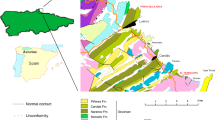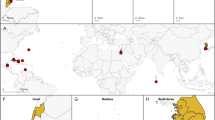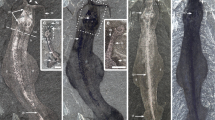Abstract
THE Monoplacophora are molluscs with bilateral serially repeated structures1. Their shells occur among the oldest mineralised hard parts in the early Cambrian, and because they are traceable from there only to the mid-Devonian they had been considered extinct2,3. However, in 1957 Lemche4 reported an extant species in the deep sea. By 1972 six further extant species and several taxonomically unassigned specimens had become known from abyssal depths5–10, showing that the Monoplacophora continued to exist in post-mid-Devonian time in the deep sea. These finds also established that such molluscs are widely distributed on the deep-sea floor5–10. Two specimens were obtained about 1,800 m deep, but all others came from between 3,000 and 6,500 m (refs 5–10). McLean has reported a new, minute species obtained from cobbles at depths of 174, 229 and 388 m on the Cortes Ridge off southern California11,12. He is assigning it to the genus Vema. This is the first record of an extant monoplacophoran which, like early Palaeozoic species, inhabits shallow bathyal depths and, like some Silurian species, occurs on a hard substrate13. I report here the recovery of live specimens of this monoplacophoran.
This is a preview of subscription content, access via your institution
Access options
Subscribe to this journal
Receive 51 print issues and online access
$199.00 per year
only $3.90 per issue
Buy this article
- Purchase on Springer Link
- Instant access to full article PDF
Prices may be subject to local taxes which are calculated during checkout
Similar content being viewed by others
References
Lemche, H. & Wingstrand, K. G. Galathea Rep. 3, 9 (1959).
Wenz, W. in Handbuch der Palaeozoologie 6 (1938).
Wenz, W. Arch. Moll. K. 72, 1 (1940).
Lemche, H. Nature 179, 413 (1957).
Clarke, A. H. Jr & Menzies, R. J. Science 129, 1026 (1959).
Menzies, R. J. & Layton, W. Jr, Ann. Mag. Nat. Hist. Ser 13, 5, 401 (1963).
Tebble, N. Nature 215, 663 (1967).
Menzies, R. J. Mar. Ass. India Proc. Symp. Mollusca Part 1, Ser. 3, 1 (1968).
Rosewater, J. Science 167, 1485 (1970).
Rokop, F. J. Veliger 15, 91 (1972).
McLean, J. H. Bull. Malacological Union for 1975, 60 (1976).
McLean, J. H. Contrib. Sci., Nat. Hist. Mus. Los Angeles No. 306 (1978).
Horny, R. Sbornik Ustredniho Ustavu Geologickeho, Praha 28, 7 (1963).
Author information
Authors and Affiliations
Rights and permissions
About this article
Cite this article
LOWENSTAM, H. Recovery, behaviour and evolutionary implications of live Monoplacophora. Nature 273, 231–232 (1978). https://doi.org/10.1038/273231a0
Received:
Accepted:
Issue Date:
DOI: https://doi.org/10.1038/273231a0
This article is cited by
-
Deep-sea video technology tracks a monoplacophoran to the end of its trail (Mollusca, Tryblidia)
Marine Biodiversity (2019)
-
Monoplacophorans and the Origin and Relationships of Mollusks
Evolution: Education and Outreach (2009)
Comments
By submitting a comment you agree to abide by our Terms and Community Guidelines. If you find something abusive or that does not comply with our terms or guidelines please flag it as inappropriate.



